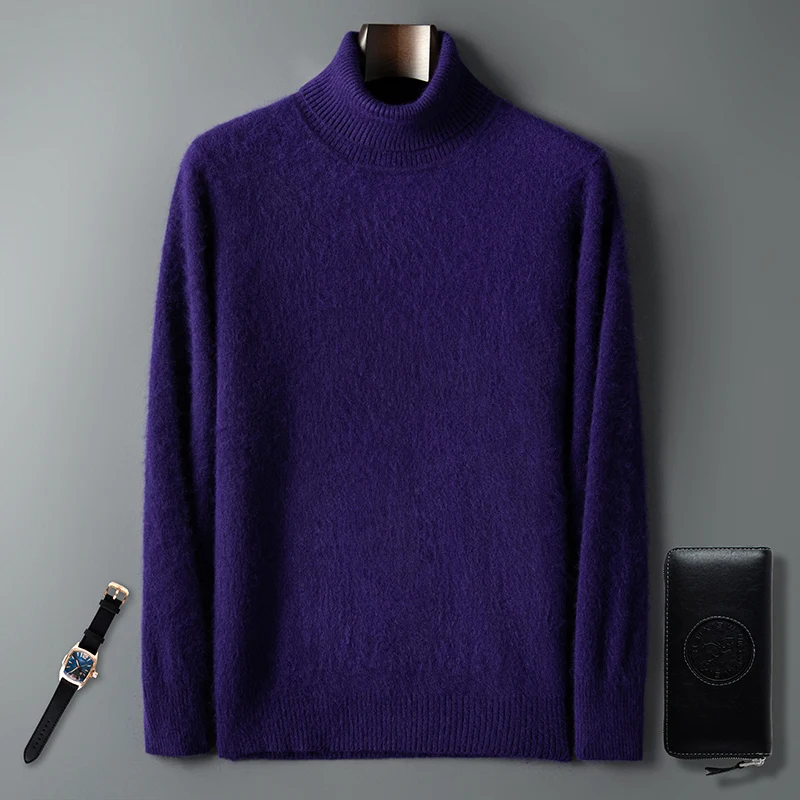Understanding Moths and Their Attraction to Cashmere
When it comes to protecting your precious cashmere garments, knowing your enemy is the first step toward effective prevention. Contrary to popular belief, it’s not the adult moths that damage your cashmere—it’s their larvae. These tiny creatures are particularly drawn to cashmere because of its high keratin protein content, which serves as a nutritious feast for developing moth larvae.
The main culprits behind cashmere damage are two species of moths: the Tineola bisselliella (webbing clothes moth) and Tinea pellionella (casemaking clothes moth). These pests have a keen attraction to:
- Body oils and sweat left on worn garments
- Food and drink residues not properly cleaned
- Dead skin cells that accumulate on unwashed clothes
- Dark, undisturbed spaces with high humidity
Moths thrive in environments that are warm, dark, and rarely disturbed—exactly the conditions found in many storage areas. Their complete lifecycle, from egg to adult, typically spans 1-3 months, giving them plenty of time to cause significant damage if left unchecked.
Signs that moths may have invaded your cashmere include:
- Irregular holes (distinct from normal wear patterns)
- Small, sandy debris (larval droppings)
- Silky tunnels or webbing on garments
- Actual presence of cream-colored larvae
- Adult moths fluttering in storage areas
Understanding how to store cashmere properly is fundamental to preventing moth infestations. The stakes are high—once moths establish themselves, they can quickly spread to other items in your wardrobe, turning a small problem into a costly one.
Essential Pre-Storage Cleaning Techniques
Thorough cleaning before storage is your first and most crucial line of defense against moths. Moths are attracted to body oils, food particles, and skin cells that linger on worn cashmere, making unwashed garments particularly vulnerable to infestation.
Hand-Washing Method
For most cashmere items, gentle hand washing is ideal:
- Fill a basin with lukewarm water (50-65°F or 10-18°C)—never hot water, which can damage fibers and cause shrinkage.
- Add a small amount of pH-neutral wool/cashmere detergent—regular detergents can be too harsh.
- Submerge the garment and gently swish for 5 minutes, avoiding rubbing or wringing.
- Drain soapy water and rinse thoroughly with clean water of the same temperature.
- Press water out gently—never twist or wring.
Professional Dry Cleaning Considerations
Professional dry cleaning is recommended for:
* Heavily soiled garments
* Structured items like blazers or coats
* Items with embellishments or multiple fabric types
* Garments with care labels specifically recommending dry cleaning
When selecting a dry cleaner, choose one with experience handling luxury fibers and specify that the garment is 100% cashmere.
Proper Drying is Critical
After cleaning, proper drying ensures your cashmere retains its shape and remains moth-resistant:
- Place the garment flat on a clean white towel.
- Gently reshape while damp, paying special attention to sleeves and necklines.
- Roll the towel with the garment inside to absorb excess moisture.
- Unroll and transfer to a fresh, dry towel on a flat surface away from direct heat and sunlight.
IMPORTANT: Ensure garments are completely dry before storage. Even slight dampness can lead to mildew or mold, which creates additional problems and attracts pests.
Mastering delicate cashmere drying techniques prevents damage while preparing garments for safe storage. This thorough cleaning process removes the biological matter that attracts moths, making your high-quality cashmere sweaters far less appealing to these destructive pests.
Airtight Storage Solutions: Creating Physical Barriers
Once your cashmere pieces are clean and completely dry, creating physical barriers becomes your next critical defense against moths. Adult moths cannot penetrate proper airtight containers, effectively protecting your valuable garments from potential infestation.
Comparison of Airtight Storage Options
| Storage Type | Pros | Cons | Best For |
|---|---|---|---|
| Sealed plastic containers | Durable, stackable, reusable | Potential for moisture buildup if not properly dried | Long-term seasonal storage |
| Vacuum-sealed bags | Maximum space saving, complete air removal | Can compress fibers if used long-term | Short to medium-term storage |
| Ziplock garment bags | Affordable, easy to use, transparent | Less durable, not ideal for very long storage | Temporary or travel storage |
Proper Folding Techniques
How you fold your cashmere before storage significantly impacts its condition:
- Lay the garment face-down on a clean, flat surface.
- Fold arms backward at the shoulders, crossing them slightly.
- Fold sides inward about one-third each way.
- Fold bottom up once or twice depending on garment size.
- Place acid-free tissue paper between folds to prevent creasing.
Never hang cashmere for long-term storage as the weight of the fabric will cause stretching and misshapen shoulders.
The use of acid-free tissue paper serves multiple purposes: it prevents sharp creases, helps maintain garment structure, absorbs any residual moisture, and creates slight separation between folded layers to allow minimal air circulation.
For comprehensive information on various container options and their benefits, our guide to storing cashmere provides detailed insights. Remember that regardless of which airtight method you choose, the container must be thoroughly clean and dry before use to prevent transferring any existing pest problems or moisture to your clean garments.
Breathable Storage Options with Enhanced Protection
While airtight containers provide excellent protection, some cashmere collectors prefer breathable storage options that allow natural air circulation. These can be ideal for frequently used items or for those concerned about moisture buildup in completely sealed environments.
Cotton Storage Bags
Natural cotton storage bags offer a compelling alternative to plastic containers:
- Choose high-quality, tightly woven cotton bags with a thread count of at least 300
- Ensure the weave is tight enough to prevent moth entry (no visible gaps when held against light)
- Select bags with secure closures—drawstrings should pull tight and zippers should close completely
- Opt for unbleached, undyed cotton to avoid chemical transfer to your cashmere
Cedar Storage Solutions
Cedar storage provides both physical protection and natural repellent properties:
- Cedar chests or wardrobes create an inhospitable environment for moths
- The natural oils in cedar repel adult moths and can inhibit larvae development
- Cedar lining can be added to existing drawers or closets for similar protection
- Regular maintenance is essential—cedar effectiveness diminishes over time

Key Considerations for Breathable Storage
When using breathable storage options, several factors require special attention:
- Location matters—keep stored items away from damp areas like basements
- Humidity levels should ideally remain between 45-55%
- Regular inspection becomes more critical than with airtight methods
- Natural repellents (discussed in the next section) are strongly recommended as an additional layer of protection
For those with an extensive collection of women’s cashmere cardigans, breathable storage can be ideal for seasonal rotation, allowing you to access different pieces while maintaining protection for the entire collection.
Natural Repellents and Deterrents
Natural repellents serve as an excellent supplement to physical barriers, creating an environment that moths actively avoid. These solutions are particularly important when using breathable storage options but can enhance protection in any storage system.
Cedar Products
Cedar’s aromatic oils naturally repel moths and other textile pests:
- Cedar blocks: Place these in drawers or storage containers, spacing them evenly
- Cedar balls: Ideal for hanging among garments or placing in pockets
- Cedar hangers: Useful for temporary hanging of cashmere (though long-term hanging is not recommended)
- Cedar chips/shavings: Can be placed in small cotton sachets for flexible placement
Maintenance: To maintain effectiveness, lightly sand cedar surfaces every 3-4 months to release fresh oils. Without refreshing, cedar loses its repellent properties over time.
Lavender and Other Herbs
Aromatic herbs offer pleasant-smelling alternatives to cedar:
- Lavender sachets: Place among folded garments, replacing every 2-3 months
- Rosemary bundles: Effective but should be completely dry before use
- Thyme or mint sachets: Alternative options with strong repellent properties
Application: Place sachets directly touching or within 2-3 inches of garments. For maximum effectiveness, use multiple sachets throughout storage containers.
Commercial Natural Repellents
Several market options combine natural ingredients for enhanced protection:
- Essential oil-based moth repellent sprays (apply to storage containers, never directly to cashmere)
- Herbal-infused hanging strips for closets and wardrobes
- Botanical pest control sachets designed specifically for textile protection
Understanding how to fold and store cashmere safely can maximize the effectiveness of these natural repellents by ensuring proper placement and circulation of protective scents throughout your storage system.
Remember that while natural repellents deter adult moths, they may not kill existing eggs or larvae, making thorough cleaning before storage essential to your protection strategy.
The Freezer Method: Eliminating Existing Threats
The freezer method is a proven, chemical-free technique for eliminating moths at all life stages. This approach uses extreme cold to kill eggs, larvae, and adult moths that might be present in your cashmere items.
The Science Behind the Method
Moths and their larvae cannot survive extreme cold for extended periods. When exposed to temperatures below 0°F (-18°C), their cellular structures are damaged, effectively eliminating the infestation without harmful chemicals or damage to fabrics.
Step-by-Step Freezing Process
Preparation:
* Clean the garment thoroughly using methods described earlier
* Ensure the item is completely dry
* Place in an airtight plastic bag, removing as much air as possible
* Seal tightly to prevent moisture from entering during freezing and thawingFreezing:
* Place the sealed bag in the coldest part of your freezer
* Ensure the freezer temperature is at 0°F (-18°C) or lower
* Leave the garment frozen for a minimum of 72 hours
* For optimal results, extend the freezing period to 7 days if possibleThawing:
* Remove the bag from the freezer but do not open immediately
* Allow the garment to gradually warm to room temperature while still sealed (usually 24 hours)
* This slow thawing prevents condensation from forming on the garment
When to Use the Freezer Method
This technique is valuable in two scenarios:
* Preventative measure before storing clean cashmere
* Active treatment when moth activity is suspected or confirmed
Important Precautions
- Never freeze damp garments as ice crystals can damage fibers
- Always use sealed plastic bags to prevent moisture damage
- Don’t overload your freezer—maintain good air circulation for consistent temperature
- For delicate or embellished items, consult a textile conservation professional first
The freezer method pairs particularly well with other prevention techniques and is especially useful for treating cashmere turtlenecks and other items with folds and seams where moths might hide.
Regular Inspection and Maintenance Schedule
Consistent monitoring and maintenance form the backbone of any effective moth prevention strategy. Even the most thorough initial preparations require ongoing attention to ensure long-term protection of your cashmere investment.
Monthly Maintenance Calendar
| Month | Primary Actions | Secondary Actions |
|---|---|---|
| January | Deep inspection of all stored items | Refresh cedar products |
| February | Check traps and repellents | Vacuum storage areas |
| March | Pre-spring rotation inspection | Replace herb sachets |
| April | Spring cleaning of storage areas | Inspect for seasonal moth activity increase |
| May | Check summer storage preparations | Refresh repellents |
| June | Deep inspection of all stored items | Clean storage containers |
| July | Check ventilation in summer heat | Replace herb sachets |
| August | Inspect for increased moth activity | Refresh cedar products |
| September | Pre-fall rotation inspection | Clean storage areas |
| October | Fall storage preparation check | Replace repellents |
| November | Prepare winter storage solutions | Vacuum storage areas |
| December | Year-end comprehensive inspection | Replace all repellents |
Key Inspection Points
When examining your cashmere:
* Check collar areas and seams where moths often begin feeding
* Inspect folds and creases where eggs might be hidden
* Examine the interior of sleeves and less visible areas
* Look for sandy debris that indicates larval activity
* Pay special attention to any spots that had previous stains

Storage Area Maintenance
- Vacuum closets, drawers, and storage areas monthly
- Wipe surfaces with a mild vinegar solution quarterly
- Ensure continued proper functioning of any humidity controls
- Check integrity of storage containers and bags for any damage
Adapting your maintenance routine by seasonal storage for cashmere preservation helps address changing environmental factors throughout the year. Remember that summer months typically see increased moth activity, requiring heightened vigilance during warm seasons.
Combating Active Infestations: Immediate Response Plan
Despite best prevention efforts, infestations can still occur. Quick, decisive action can minimize damage and prevent spread to other valuable items in your wardrobe.
Immediate Isolation Protocol
- At the first sign of moths or damage, immediately remove suspected items from your main storage area
- Place affected garments in sealed plastic bags
- Keep these bags separate from all other clothing items
- Thoroughly inspect all nearby garments for signs of infestation
Treatment Options for Infested Cashmere
Professional Cleaning:
* Take infested items directly to professional cleaners
* Specify the moth issue when dropping off garments
* Request high-temperature treatment if the garment can tolerate it
* Consider specialized pest control cleaners for severe cases
Freezing Application:
* Follow the freezing method outlined previously
* Extend the freezing period to a full week for confirmed infestations
* Repeat the process after a week at room temperature to catch any surviving eggs
Severe Infestation Considerations:
* If damage is extensive, consult a textile restoration specialist
* Some heavily infested items may need to be sacrificed to protect others
* Document damage for insurance purposes if applicable
Comprehensive Environment Treatment
Pheromone Traps:
* Place moth traps throughout storage areas
* Position them at the recommended height (usually eye level)
* Check and replace according to manufacturer instructions
* Use traps both for detection and disruption of breeding cycles
Deep Cleaning Procedure:
1. Remove all items from storage areas
2. Vacuum thoroughly, including cracks, corners, and edges
3. Dispose of vacuum contents in sealed bags outside your home
4. Wipe surfaces with appropriate cleaning solutions
5. Allow complete drying before returning cleaned items to storage
Cashmere Wrap Sweaters, Women's Cashmere Pullovers
$75.89 Select options This product has multiple variants. The options may be chosen on the product pageCashmere Cable Knit Sweaters, Women's Cashmere Pullovers
Price range: $111.82 through $112.93 Select options This product has multiple variants. The options may be chosen on the product pageCropped Cashmere Sweaters, Women's Cashmere Pullovers
$155.77 Select options This product has multiple variants. The options may be chosen on the product pageOversized Cashmere Sweaters, Plus Size Cashmere Sweaters, Women's V-Neck Cashmere Sweaters
$136.87 Select options This product has multiple variants. The options may be chosen on the product page- Price range: $108.11 through $130.03 Select options This product has multiple variants. The options may be chosen on the product page
Striped Cashmere Sweaters, Women's Cashmere Pullovers
$139.68 Select options This product has multiple variants. The options may be chosen on the product page
Advanced Prevention Strategies for Luxury Collections
Collectors with substantial cashmere investments may benefit from implementing advanced strategies that create an environment where moths simply cannot thrive.
Environmental Controls
Humidity Management:
* Maintain humidity levels between 45-55%
* Consider a dedicated dehumidifier for closet spaces
* Use humidity monitors to track levels
* Silica gel packets can help manage moisture in smaller storage containers
Temperature Considerations:
* Keep storage areas cool but not damp
* Avoid temperature fluctuations that can create condensation
* Ideal storage temperature ranges from 65-75°F (18-24°C)
* Ensure adequate ventilation to prevent hot spots
Light Exposure Management:
* Moths prefer darkness, so periodic light exposure disrupts their habitat
* Consider closet lighting systems with UV protection
* Allow folded garments occasional exposure to indirect sunlight
* Use transparent storage bins that allow visible inspection without opening
Rotation Systems
Implementing a regular rotation system serves two purposes: it prevents items from remaining undisturbed for extended periods (which moths prefer) and distributes wear more evenly across your collection:
- Develop a quarterly rotation schedule for seasonal items
- Document each garment’s storage location and rotation date
- Create a physical or digital inventory system for large collections
- Consider photographing valuable pieces for insurance and identification
Specialized Storage Furniture
For serious collectors, purpose-built storage solutions offer superior protection:
- Cedar-lined wardrobes with tight-fitting doors
- Custom cabinetry with integrated pest management features
- Museum-quality archival storage systems for extremely valuable pieces
- Climate-controlled display cases for showcase items
For those with extensive men’s cashmere pullover collections, these advanced systems protect your investment while maintaining easy access and visibility.
What to Avoid: Common Mistakes in Cashmere Protection
Even with the best intentions, certain common practices can actually damage your cashmere or prove ineffective against moths. Avoiding these mistakes is crucial for maintaining the integrity of your luxury garments.
Harmful Chemical Deterrents
Traditional Mothballs:
* Contain naphthalene or paradichlorobenzene, which are toxic chemicals
* Release fumes that can be harmful to humans and pets
* Leave persistent unpleasant odors on garments
* Can cause yellowing or discoloration of fabrics over time
Undiluted Essential Oils:
* Direct application of cedar oil or other essential oils can stain fabrics
* Concentrated oils may damage delicate cashmere fibers
* Some botanical extracts can cause discoloration when applied directly
Storage Myths and Ineffective Methods
- Plastic dry cleaning bags are not moth-proof and trap moisture that can damage fibers
- Cedar alone is not sufficient protection without regular refreshing
- Airtight plastic containers without proper cleaning beforehand can trap moths inside
- Assuming all damage is moth-related when it could be carpet beetles or other pests

Improper Handling Practices
- Overcrowding storage containers reduces effectiveness of repellents and creates creases
- Storing unwashed garments attracts moths regardless of other precautions
- Using scented fabric softeners that may attract rather than repel pests
- Mixing infested and clean items during treatment attempts
Understanding the ultimate guide to cashmere storage helps you avoid these common pitfalls while implementing proper protection methods.
Caring for Cashmere in Changing Environments
Your cashmere protection strategy must adapt to various situations and environments. Whether you’re traveling, relocating, or dealing with seasonal changes, your approach needs to remain flexible yet effective.
Seasonal Transitions
- Winter to Spring: Before storing winter cashmere, implement deep cleaning and freezing treatment
- Summer Storage: Increase inspection frequency during warm months when moth activity peaks
- Fall Retrieval: Recheck all items as you bring them out of storage, refresh protection methods
- Holiday Travel: Use travel-sized protection for items packed for extended trips
Travel Considerations
- Use compressible travel bags with cedar sachets for short trips
- Consider packable garment bags with herbal linings for longer journeys
- Keep a travel-sized lint roller and stain treatment for immediate care
- Upon returning home, air out and inspect items before returning to storage
Environmental Adaptations
Humid Climates:
* Increase use of dehumidifiers and moisture absorbers
* Choose breathable storage with more frequent rotation
* Consider professional storage for extremely valuable pieces during humid seasons
Very Dry Climates:
* Monitor for static electricity which can damage fibers
* Maintain minimum humidity levels to prevent fiber brittleness
* Use humidifiers if indoor air becomes excessively dry
Small Living Spaces:
* Utilize under-bed storage with integrated cedar elements
* Consider vacuum bags for seasonal items with proper preparation
* Use vertical storage solutions with built-in pest deterrents
Adapting your cashmere home environment strategies helps maintain protection regardless of living situation or climate challenges.
Questions About Moth Prevention for Cashmere
Can I use lavender essential oil directly on cashmere?
No, never apply essential oils directly to cashmere. Instead, place a few drops on cotton balls or wooden blocks placed near (but not touching) your cashmere. Direct application can cause staining and fiber damage.
How long do cedar products remain effective?
Cedar effectiveness typically lasts 3-4 months before needing refreshing. To reactivate the natural oils, lightly sand the wood surface or add a few drops of cedar oil to refreshable cedar products. Without maintenance, cedar gradually loses its repellent properties.
Will vacuum-sealing damage cashmere over time?
Vacuum-sealing is generally safe for short to medium-term storage (up to 6 months). For longer periods, the compression can potentially cause fibers to lose their natural loft and resilience. If using vacuum storage for extended periods, add acid-free tissue paper between folds and reconditioning garments upon removal.
Can moth larvae survive professional dry cleaning?
High-quality professional dry cleaning is highly effective at eliminating moths at all life stages. The cleaning solvents and high temperatures used in the process kill eggs, larvae, and adult moths. However, inform your cleaner about potential infestation so they can use appropriate techniques.
Is it safe to store cashmere year-round?
Yes, with proper precautions, cashmere can be safely stored year-round. The key is implementing a comprehensive protection system including thorough cleaning, appropriate storage containers, effective repellents, and regular maintenance checks. Climate-controlled environments offer the best long-term storage conditions.
Building a Complete Cashmere Protection System
Effective moth prevention isn’t about finding a single perfect solution—it’s about creating a comprehensive protection system that addresses all aspects of the threat. By layering multiple prevention methods, you create redundancy that ensures your cashmere remains safe even if one measure fails.
The Three-Layer Protection Formula
Foundation Layer: Thorough Cleaning
* Remove all attractants through proper washing or dry cleaning
* Ensure complete drying before storage
* Address any stains or spots immediatelyBarrier Layer: Physical Protection
* Choose appropriate storage containers based on your environment
* Implement proper folding and arrangement techniques
* Create physical barriers moths cannot penetrateDeterrent Layer: Repellents and Maintenance
* Add appropriate natural repellents to your storage system
* Maintain regular inspection schedule
* Refresh repellents according to recommended timelines
This layered approach requires minimal time investment—typically just 15-30 minutes per month—while providing maximum protection. The long-term savings are substantial, as replacing fine cashmere items can cost hundreds or even thousands of dollars.
The Estate Cloth collection represents a significant investment in quality and craftsmanship. Preserving luxury cashmere through proper storage not only protects your financial investment but ensures these timeless pieces remain beautiful and wearable for years to come. By implementing these comprehensive protection strategies, you transform cashmere care from a concern into a simple, effective routine that becomes second nature.







